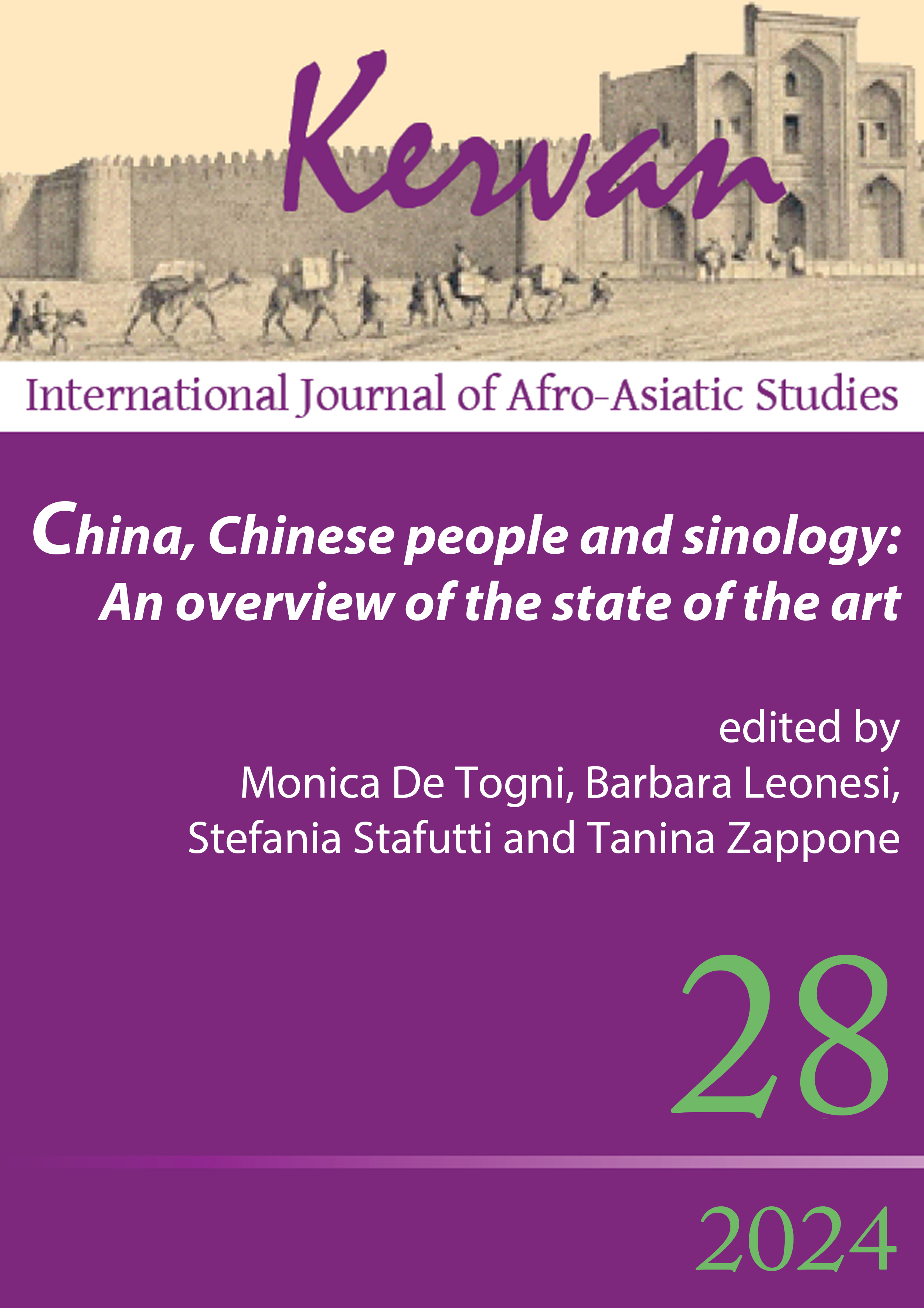The new era of Sino-American coproduction: “Chinese national culture” in “White snake” (2019) and “Over the Moon” (2020)
DOI:
https://doi.org/10.13135/1825-263X/11598Abstract
Mythologically-themed animationsare ideal texts to discern many issues related to notions such as cultural and social identity, collective memory and nationalism. In the case of coproductions, a locus where different national interests ideally cooperate, the investigation of these aspects allows not only to confirm how myths perpetuate their crucial role in modern societies through intertextuality, but also to elucidate how their usage changes according to communication targets and purposes. In the present essay, I address the new era of Sino-American coproduction from the perspective of Chinese mythology and discourse on mythological animation. Two case studies, White Snake (Baishe yuanqi 白蛇: 缘起, Light Chaser and Warner Bros, 2019) and Over the Moon (Feibenqu yueqiu 飞奔去月球, Pearl Studio/Netflix/Glen Kean Productions, 2020), have been chosen to elucidate one specific aspect of this complex phenomenon, i.e. how, despite the “homogenizing effect” of globalization (Dégh 1994: 23), cultural and national orientations emerge from different textual choices. After providing a necessary literary-historical (Zhou 2020; Du 2019; Kokas 2017; Chen 2016; Yang and Zhen 2015), discursive (Wang 2024; Zhao and Zheng 2023; Tang and Gong 2021; Wu and Wang 2020; Dong 2020) and institutional (Brzeski 2017, 2018; Frater 2015) backgrounds, the textual analysis demonstrates that the Sino-American coproduction that is US-lead (OtM) follows Hollywood traditions and established coproduction trajectories, while the PRC-lead one (WS) responds more closely to national official discourse on guochan 国产 (national cultural production). The analysis and comparison are carried out in the framework of Folklore and Popular culture studies (Leskosky 1989, 2020; Koven 2013; Bird 2006) and applies content and visual/multimodal tools (Whyke 2024; Kriss 2016).
Downloads
Downloads
Published
Versions
- 2025-02-20 (2)
- 2025-02-20 (1)
Issue
Section
License
Gli autori che pubblicano su Kervan accettano le seguenti condizioni:
- Gli autori mantengono i diritti sulla loro opera e cedono alla rivista il diritto di prima pubblicazione dell'opera, contemporaneamente licenziata sotto una Licenza Creative Commons - Attribuzione che permette ad altri di condividere l'opera indicando la paternità intellettuale e la prima pubblicazione su questa rivista.
- Gli autori possono aderire ad altri accordi di licenza non esclusiva per la distribuzione della versione dell'opera pubblicata (es. depositarla in un archivio istituzionale o pubblicarla in una monografia), a patto di indicare che la prima pubblicazione è avvenuta su questa rivista.


 The articles that have appeared on Kervan since 2016 are rated as Class A in the system of National Scientific Qualification (ASN, disciplines 10/N1 and 10/N3).
The articles that have appeared on Kervan since 2016 are rated as Class A in the system of National Scientific Qualification (ASN, disciplines 10/N1 and 10/N3). The journal has been approved for inclusion in DOAJ. The DOAJ listing of the journal is available at
The journal has been approved for inclusion in DOAJ. The DOAJ listing of the journal is available at  The journal has been approved for inclusion in ERIH PLUS. The ERIH PLUS listing of the journal is available at
The journal has been approved for inclusion in ERIH PLUS. The ERIH PLUS listing of the journal is available at  Kervan was just accepted for indexing in SCOPUS. This important milestone ensures that articles published in Kervan are easily found when searching for library, archives and Information science and it enables Kervan authors to keep track of how often their article has been cited by others.
Kervan was just accepted for indexing in SCOPUS. This important milestone ensures that articles published in Kervan are easily found when searching for library, archives and Information science and it enables Kervan authors to keep track of how often their article has been cited by others.
